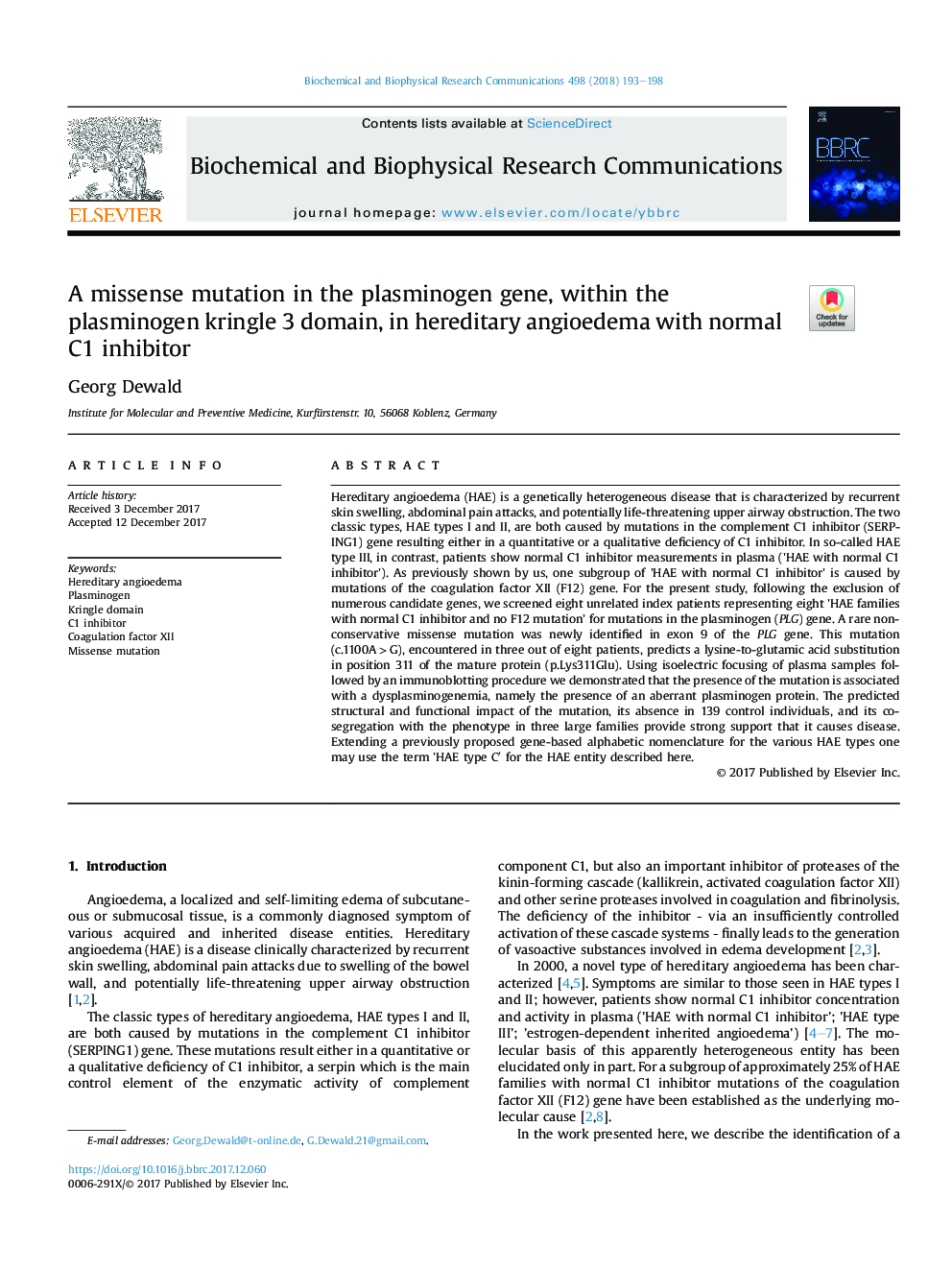| کد مقاله | کد نشریه | سال انتشار | مقاله انگلیسی | نسخه تمام متن |
|---|---|---|---|---|
| 8293767 | 1536747 | 2018 | 6 صفحه PDF | دانلود رایگان |
عنوان انگلیسی مقاله ISI
A missense mutation in the plasminogen gene, within the plasminogen kringle 3 domain, in hereditary angioedema with normal C1 inhibitor
دانلود مقاله + سفارش ترجمه
دانلود مقاله ISI انگلیسی
رایگان برای ایرانیان
کلمات کلیدی
موضوعات مرتبط
علوم زیستی و بیوفناوری
بیوشیمی، ژنتیک و زیست شناسی مولکولی
زیست شیمی
پیش نمایش صفحه اول مقاله

چکیده انگلیسی
Hereditary angioedema (HAE) is a genetically heterogeneous disease that is characterized by recurrent skin swelling, abdominal pain attacks, and potentially life-threatening upper airway obstruction. The two classic types, HAE types I and II, are both caused by mutations in the complement C1 inhibitor (SERPING1) gene resulting either in a quantitative or a qualitative deficiency of C1 inhibitor. In so-called HAE type III, in contrast, patients show normal C1 inhibitor measurements in plasma ('HAE with normal C1 inhibitor'). As previously shown by us, one subgroup of 'HAE with normal C1 inhibitor' is caused by mutations of the coagulation factor XII (F12) gene. For the present study, following the exclusion of numerous candidate genes, we screened eight unrelated index patients representing eight 'HAE families with normal C1 inhibitor and no F12 mutation' for mutations in the plasminogen (PLG) gene. A rare non-conservative missense mutation was newly identified in exon 9 of the PLG gene. This mutation (c.1100Aâ¯>â¯G), encountered in three out of eight patients, predicts a lysine-to-glutamic acid substitution in position 311 of the mature protein (p.Lys311Glu). Using isoelectric focusing of plasma samples followed by an immunoblotting procedure we demonstrated that the presence of the mutation is associated with a dysplasminogenemia, namely the presence of an aberrant plasminogen protein. The predicted structural and functional impact of the mutation, its absence in 139 control individuals, and its co-segregation with the phenotype in three large families provide strong support that it causes disease. Extending a previously proposed gene-based alphabetic nomenclature for the various HAE types one may use the term 'HAE type Câ² for the HAE entity described here.
ناشر
Database: Elsevier - ScienceDirect (ساینس دایرکت)
Journal: Biochemical and Biophysical Research Communications - Volume 498, Issue 1, 25 March 2018, Pages 193-198
Journal: Biochemical and Biophysical Research Communications - Volume 498, Issue 1, 25 March 2018, Pages 193-198
نویسندگان
Georg Dewald,